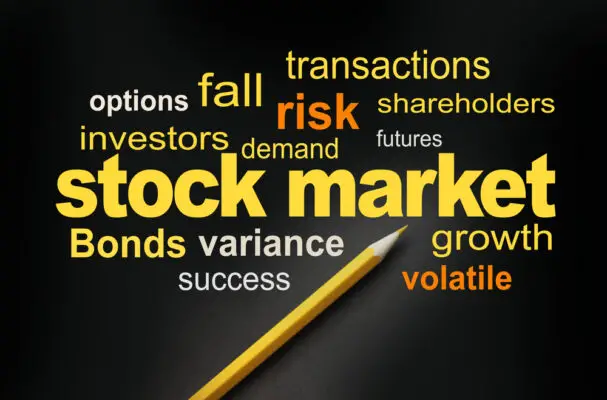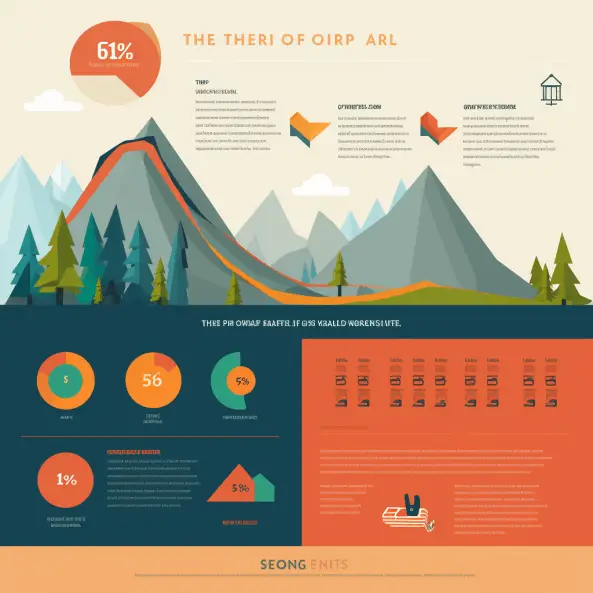As a professional constantly striving for success, understanding financial key risk indicators and how to navigate them is critical.
Here are 10 essential tips for decoding financial Key Risk Indicators (KRIs):
- Develop a KRI framework: A well-defined KRI framework is essential for effectively utilizing financial KRIs. This framework should identify the most critical risks, define the relevant KRIs, and establish thresholds for acceptable levels of risk. (source: Risk Publishing)
- Identify relevant KRIs: It is important to identify the KRIs that are most relevant to the specific financial institution based on its unique risk profile and risk appetite. (source: TechTarget)
- Align KRIs with business objectives: KRIs should be aligned with the financial institution’s overall business objectives to ensure that they measure the risks most relevant to achieving those objectives. (source: AuditBoard)
- Monitor KRIs in real-time: KRIs should be monitored in real-time to identify and address any potential risks as quickly as possible. (source: Pirani)
- Use data visualization tools: Data visualization tools can effectively communicate KRI data to stakeholders and identify trends and patterns that may not be immediately apparent. (source: LogicGate)
- Conduct regular risk assessments: Regular risk assessments can help identify new risks and ensure that KRIs are updated. (source: SafetyCulture)
- Use leading and lagging indicators: Leading indicators can help predict future risks while lagging indicators can help identify risks that have already occurred. (source: TechTarget)
- Ensure data accuracy: KRIs are only effective if the underlying data is accurate and reliable. Financial institutions should have robust data management processes to ensure data accuracy. (source: Risk.net)
- Involve key stakeholders: Key stakeholders, such as risk managers, business leaders, and board members, should be involved in the development and monitoring of KRIs to ensure that they are aligned with overall business objectives. (source: AuditBoard)
- Continuously improve KRI processes: KRIs should be continuously reviewed and improved to ensure that they are effective in identifying potential risks and mitigating them. This includes incorporating feedback from stakeholders and updating KRIs as the business environment changes. (source: Pirani)
These indicators offer insights into a company’s financial health and help forecast potential challenges. Three major risk indicators – Profitability, Liquidity, and Solvency Ratios- provide the necessary information.
Through an in-depth understanding of these, you empower yourself with the tools to evaluate, predict, and maintain your company’s financial well-being.
This comprehensive guide seeks to decode these pivotal indicators, aiding you in your journey towards becoming a finance expert.
Understanding of Profitability Ratios
Understanding the fundamental profitability ratios is critical in a business environment keyed to optimizing profits. These are the key performance indicators used by investors, analysts, and entrepreneurs across the globe.
They assess a company’s ability to generate profits relative to different metrics, such as sales, assets, and equity. Here are some key profitability ratios every business-savvy individual should be familiar with:
- Gross Profit Margin: This ratio demonstrates the direct correlation between a company’s revenue and cost of goods sold (COGS). In other words, it’s the proportion of each dollar of revenue that a company retains as gross profit. A high gross profit margin signifies efficient production methods, optimal pricing strategies, or a potent combination.
- Operating Profit Margin: This ratio offers an accurate picture of a company’s operational efficiency. It measures the proportion of revenue left after accounting for variable and fixed costs. Strong operating profit margins indicate agile management and efficient operations.
- Net Profit Margin: This is the king of profitability ratios, often used to finalize investment decisions. The net profit margin reflects a company’s remaining revenue after subtracting all operating expenses, taxes, interest, and preferred stock dividends. A higher net profit margin indicates a highly efficient, profitable organization that successfully manages its cost structures.
- Return on Assets (ROA): The ROA ratio is a critical measure that reflects a company’s efficiency in using its assets to generate profits. It is calculated by dividing a company’s net income by its total assets. A higher ROA means the company is more efficiently utilizing its assets.
- Return on Equity (ROE): ROE measures a firm’s ability to generate profits from shareholders’ equity. Investors scrutinize this ratio because it demonstrates the expected return on their investments. High ROE often means competent management and smart business strategies.
So, how well do you know these ratios? Their relevance extends beyond facts and figures, providing critical insights into a company’s profitability and operational efficiency.
This knowledge is compulsory for anyone looking to develop astute business acumen in today’s profit-driven world. Remember, metrics are messages from your business – make sure you’re listening to what they’re saying.

Scrutinizing Liquidity Ratios
Unquestionably, Liquidity Ratios remain an indispensable benchmark in determining the health of any organization. This key set of financial indicators allows you to see how equipped your business is to meet short-term obligations and handle immediate financial pressures.
Often overlooked indicators can make or break a company’s financial stability.
The Current Ratio
The Current Ratio – the working capital ratio- is an excellent metric for assessing immediate operating performance. This ratio compares a company’s current assets to its current liabilities, revealing the business’s capacity to pay off its short-term obligations.
A ratio above 1 signifies financial surefootedness, but a score below 1 signals potential short-term liquidity threats.
The Quick Ratio
The Quick Ratio, also dubbed an acid test, is even more discerning. It excludes inventories from the current assets before matching them against current liabilities.
This sharp-edged ratio predicts a company’s potential to meet its short-term liabilities where sales slow down abruptly. A quick ratio substantially below 1 could indicate looming financial trouble.
The Cash Ratio
The Cash Ratio – is the most stringent liquidity metric. It only considers the most liquid assets (cash and cash equivalents) against current liabilities.
This is the ultimate stress test. If your business can meet its immediate obligations using only cash or near-cash assets, then financially, it’s as sturdy as a fortress.
The Operating Cash Flow Ratio
The Operating Cash Flow Ratio reveals how well the money generated from the business operations can cover the current liabilities.
This ratio avoids relying too heavily on accounting profitability measures and prioritizes actual cash flow. A ratio of less than 1 might signal liquidity problems.
In the end, it boils down to a delicate balancing act. Maintaining too much liquidity might translate to idle resources, while too little can lead to insolvency.
It’s about finding the sweet spot, which varies depending on the industry, market conditions, and overall financial strategy.
A successful business keeps tabs on these ratios, monitoring them for drastic fluctuations and making informed decisions promptly.

Recognizing Solvency Ratios
Debt Ratio and its Implication
With the surge in understanding finance, the debt ratio is popular amongst many. It’s recognized as the prime determiner of an organization’s long-term financial health – a gauge of its liabilities as a percentage of its total assets.
A high debt ratio sends waves of caution concerning potential bankruptcy risks and shows lowered attractiveness to potential investors or creditors. Conversely, an organization with a low debt ratio exhibits a superior financial standing and better growth prospects.
Equity Ratio Unravelled
The equity ratio is another cog in the wheel when it comes to analysing financial health. Simply put, it shines a light on an organization’s financial leverage.
Firms with high equity ratios can tap into investor funds while ensuring liquidity and solvency. This ratio can further function as a magnet attracting investors – safeguarded by the knowledge that debt doesn’t heavily overshadow their investment.
Understanding the Times Interest Earned Ratio
Perhaps invaluable to stockholders and potential creditors, the time’s interest earned ratio, also known as the interest coverage ratio, defines how comfortably an organization can pay interest on outstanding debt.
A more significant number for this ratio informs potential investors about the company’s ability to fulfil its debt obligations without trading off with operating earnings.
Explicating the Debt Service Coverage Ratio
As an entrepreneur, the debt service coverage ratio (DSCR) should ideally be the knight in shining armour. This powerful ratio introduces the capacity of sufficing for the principal and interest payments.
Thus, it directly hints at a company’s risk levels in serving its debts. A high DSCR indicates a sufficient buffer, often drawing towards investors and lenders.
Debt to Equity Ratio and its Significance
Lastly, the debt-to-equity ratio analyzes a firm’s financial leverage by comparing total liabilities to shareholders’ equity.
This ratio provides valuable info about the balance of debt and equity a company uses to finance its assets, indicating strategic directions and financial health.
To summarize, solvency ratios serve as a secret risk indicator decoder, unearthing key insights into a firm’s long-term financial health.
They enable entrepreneurs and investors alike to make informed decisions, facilitating frequent checks on the pulse of a company’s financial health. While financial ratios are not the be-all and end-all, they are powerful tools for maintaining a robust, healthy financial position. So get decoding!

Conclusion
The road to financial expertise requires continuous learning and an analytical eye for grasping key financial indicators.
A thorough understanding of Profitability, Liquidity, and Solvency Ratios can shed light on the company’s current performance, predict its future, and help circumvent financial pitfalls.
Knowledge is power; in finance, this knowledge can mean the difference between success and failure. As you further delve into other financial analysis components, remember the fundamental importance of these key indicators and use them as your compass guiding your financial decision-making.

Chris Ekai is a Risk Management expert with over 10 years of experience in the field. He has a Master’s(MSc) degree in Risk Management from University of Portsmouth and is a CPA and Finance professional. He currently works as a Content Manager at Risk Publishing, writing about Enterprise Risk Management, Business Continuity Management and Project Management.


